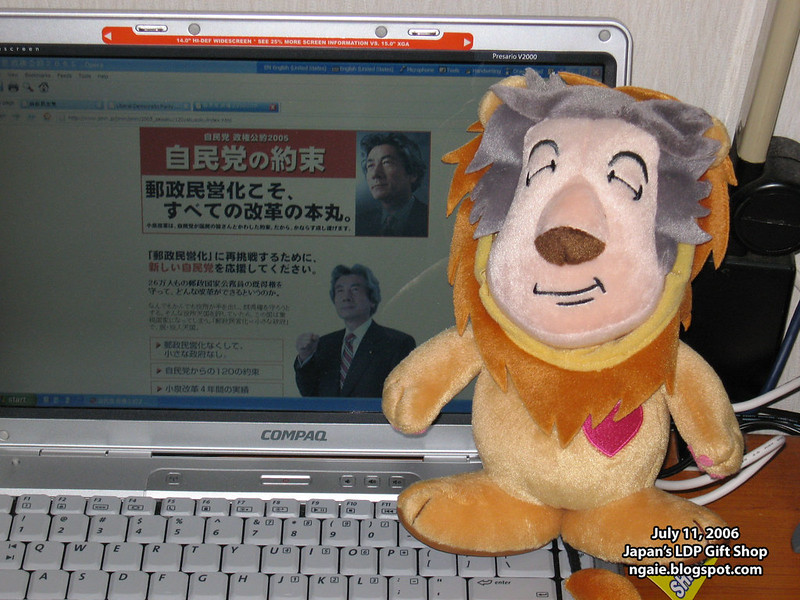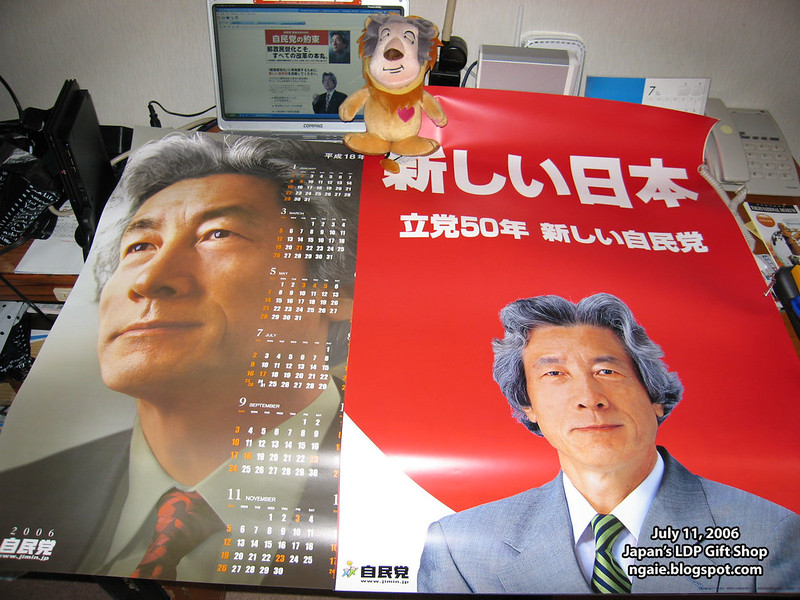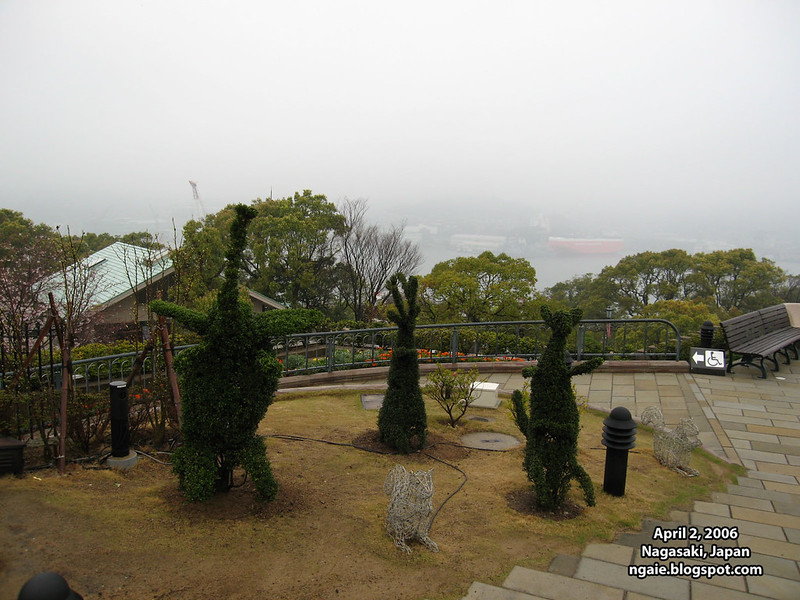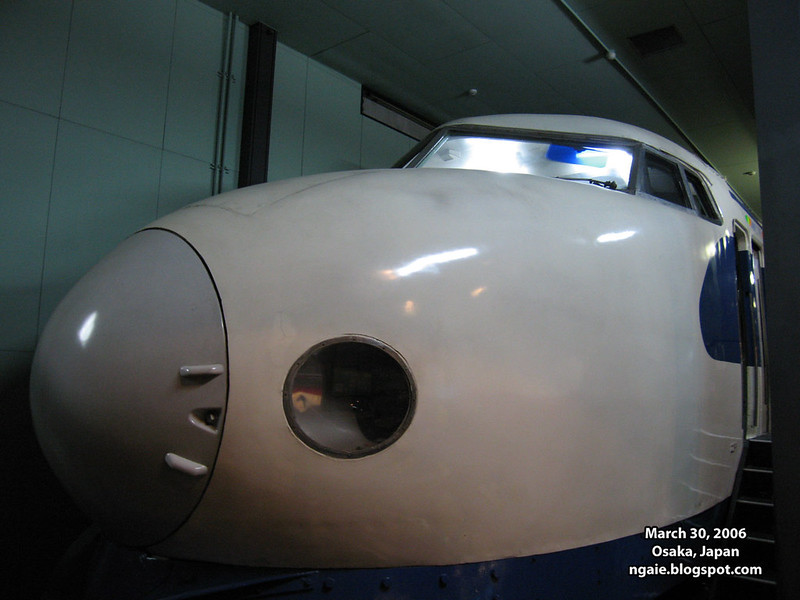(Updated: July 11, 2013 with high resolution photos)
On July 11, 2006, my friend and I were walking around Nagatacho in Tokyo which is the government nerve centre of Japan (kind of like Capitol Hill in Washington, DC or Whitehall in London, England) and by chance we stumbled upon the headquarters of the Liberal Democratic Party...
What happens when you visit the headquarters of the party that has ruled Japan for 50 years straight (excluding a few months in the 90s)?
You go straight into the gift shop to buy Japan-style propaganda...
(Background story: My friend said, since this is Japan, there *must* be a gift shop in there, so after some hesitation, we asked the police officer in our broken Japanese if there was a gift shop and he said yes and let us in!)
Prime Minister Koizumi plush doll, 500 yen...

Koizumi 2006 Calendar, 100 yen...Koizumi propaganda posters (2x), 70 yen each...

Owning the most "unique" Japan souvenir there is...Priceless.
(Actually the people who worked at the gift shop were quite surprised to see foreigners shopping at the Liberal Democratic Party gift shop and some of the gifts were actually quite good. I bought some Made in Japan woman's pocket make-up mirror for family members which had a nice Imperial family crest on it and as a bonus for all the things that we bought, the staff gave each of us a 2006 Imperial family calendar!)









